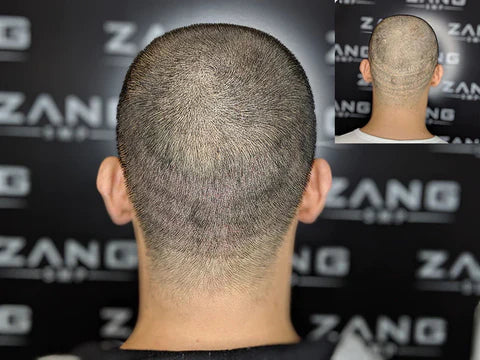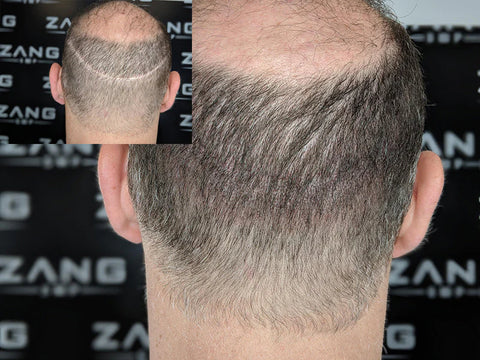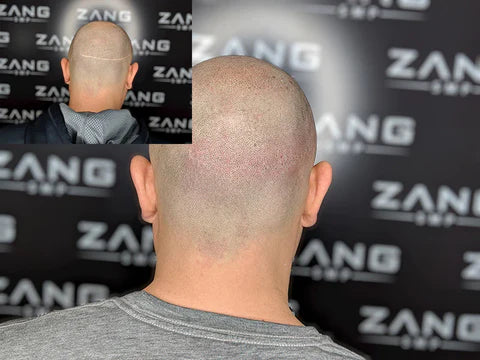Los Angeles SMP: Expert Scar Concealment Solutions
There are many cases of scalp micropigmentation (SMP) being applied to scars on the scalp. Prior to the existence of SMP, hair transplantation was the only proven method for permanent hair restoration. A follicular unit transplantation (FUT) procedure leaves clients with a strip scar in the back of the head where the donor tissue was taken from. This causes embarrassment and self-consciousness in many men, especially when they prefer to keep their hair short. More recently, a less invasive transplantation technique called follicular unit extraction (FUE) has become mainstream, primarily because it does not leave a large linear scar on the head. However, it can leave small visible white scars in the extraction sites; and in cases where the donor area has been overharvested, the remaining hair in the back of the head can look very patchy and thin.



SMP for Scar Concealment
With SMP we are able to effectively conceal FUT and FUE transplant scars by depositing pigments into the scar region and blending it in to the surrounding hair. However, the amount of concealment we can guarantee is determined by the aggressiveness and texture of the scar. The more raised or indented the scar is, the more likely clients would need to keep their hair at a longer length in order to effectively conceal the scar. Clients can typically expect the color of the scar to match the surrounding hair after the SMP treatments, but any existing texture of the scar will not be affected. The end result is a 65-80% concealment of the scar.
Concealing Cranial Scars
If you have cranial scars, you may already be a good candidate for scar camouflage tattooing. SMP scar camouflage works best for people with thinning hair or a bald head that may want to hide cranial scars. It’s suitable for most people, so choosing SMP comes down to a matter of personal taste. You may be a good candidate if you’re self-conscious about wearing your hair buzzed or short thanks to cranial scars.
Advances in SMP mean that it’s suitable for a wide range of hair colors. Even those with blond or red hair can now get the full benefit from SMP. The main group who may encounter problems with SMP are those with skin conditions on the scalp or if their scars are keloid. Conditions such as eczema can respond negatively to SMP treatment.
Does Scar Camouflage hurt?
If you have a low pain tolerance, you might be wondering if that excludes you from SMP.
SMP doesn’t demand a high pain tolerance – it’s no more painful than a tattoo, and it may hurt less overall thanks to the lower penetration required.
The feeling of SMP is usually closer to discomfort than actual pain. Customers will usually want to take frequent breaks to manage this discomfort.
For scar concealment we would need clients for two treatments minimum, one week apart, with a possibility of a third session 1-3 months afterwards for the finishing touches.
Treatment Preparation
For preparation for scar concealment treatments we recommend our clients to apply some bio-oil to the scar regions to soften up the areas. Bio-oil is an anti-inflammatory agent with nutrients containing vitamin A and E that improve the appearance of existing stretch marks or scars. The ingredients increase the elasticity of the skin thereby moisturizing the scar region and in turn allowing for SMP to yield stellar retention. Apply the bio-oil once a day before you got to bed to yield improved results.
Get a personalized quote for your treatment with ZangSMP
All consultations are always FREE. We offer in-person consultations, and virtual consultations through video call or phone call.
